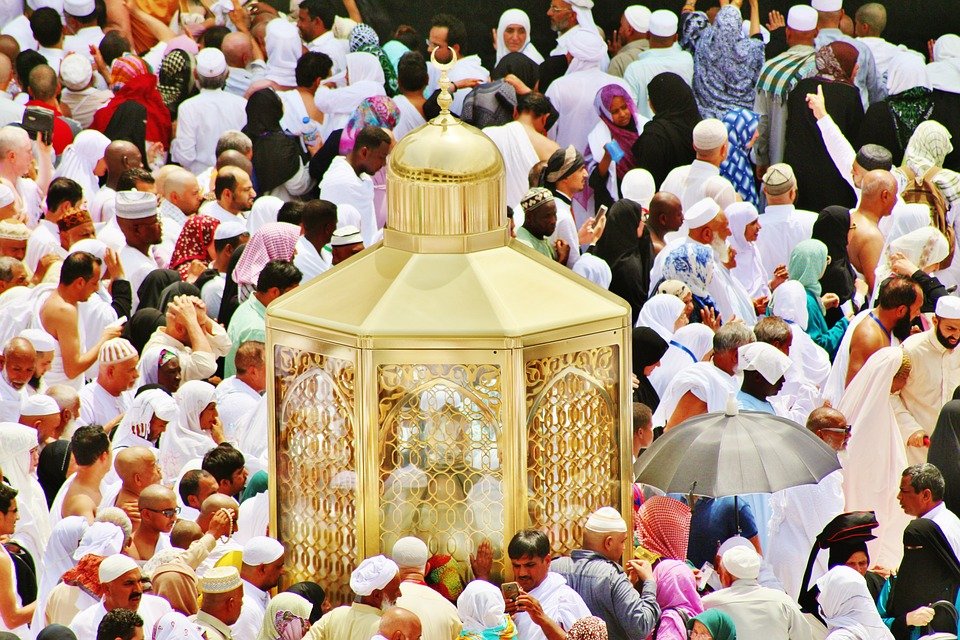You are here to read: How Many Kinds of Hajj in Urdu: A Complete Guide – A Thoughtfully Written Guide Offering Spiritual Wisdom and Travel Advice for Every Pilgrim who is going on holy journey of Hajj or Umrah.
In this article, we explore “how many kinds of Hajj in Urdu.” If you are looking for a comprehensive understanding of the different types of Hajj, you are in the right place. I promise that you will find a thorough guide that caters to your queries about “how many kinds of Hajj in Urdu.” Whether you are a first-time visitor or seeking to deepen your knowledge, this article will serve as an essential resource.
Understanding “how many kinds of Hajj in Urdu” holds significant importance for believers. It helps in recognizing the various prayers and rituals associated with each type of Hajj. I feel that having this knowledge is vital for anyone planning their pilgrimage. Our site, Airlinkhajjandumrah.com, boasts nine years of expertise in the Umrah and Makkah, Madinah travel field, and we are committed to providing you with accurate and insightful information. In my opinion, this guide will not only inform but empower you as you prepare for one of the most sacred obligations in Islam.
How Many Kinds of Hajj in Urdu: A Complete Guide
Understanding Hajj
Hajj is more than just a religious obligation; it’s a time for reflection and connection with our faith. Every year, millions of Muslims from around the world come together in Makkah, fulfilling this sacred duty. This pilgrimage occurs during the last month of the Islamic calendar, known as Dhul-Hijjah. The act of Hajj symbolizes unity, spirituality, and devotion. Every participant shares a profound bond, walking the same paths that prophets once walked. It’s a stirring experience that leaves a lasting impact on the hearts of the pilgrims.
But did you know that there are different types of Hajj? Each type has its own significance and procedure. Knowing these varieties can deepen your understanding of the pilgrimage and help you appreciate its multifaceted nature. It invites questions about the purpose behind each form and how each one fulfills spiritual needs. This guide aims to illuminate the different kinds of Hajj in Urdu, making it easier for everyone to comprehend. Let’s explore the intricacies together and find joy in this sacred matter.
The Types of Hajj
When we talk about the kinds of Hajj, we usually refer to three major categories: Hajj-e-Ifrad, Hajj-e-Qiran, and Hajj-e-Tamattu. Each serves a unique purpose and has different rites associated with it. I think it’s essential to understand these kinds, as they allow us to choose the one that resonates with our spiritual journey.
Hajj-e-Ifrad is the simplest form. Pilgrims perform only the Hajj rituals without the accompanying Umrah. This type is suitable for those who cannot get a visa for Umrah or prefer to focus solely on the Hajj. On the other hand, Hajj-e-Qiran combines both Hajj and Umrah. Participants perform the rituals of both but without exiting the state of Ihram, which symbolizes purity. Lastly, Hajj-e-Tamattu is a fascinating option where individuals perform Umrah, exit the state of Ihram, and then return for Hajj. This gives pilgrims the chance to experience both within the same pilgrimage.
Hajj-e-Ifrad: The Solemn Pilgrimage
Hajj-e-Ifrad is a straightforward experience, focusing solely on fulfilling the Hajj rituals. Pilgrims enter the state of Ihram, wear simple white garments, and proceed to Makkah. The simplicity of this type of Hajj allows individuals to direct their energies toward the main purpose—connecting with Allah. This singular focus can result in a powerful and meaningful experience.
You're at the middle of this awesome post at AirlinkHajjandUmrah.com through: How Many Kinds of Hajj in Urdu: A Complete Guide. Keep reading, it gets better!
Many people feel that Hajj-e-Ifrad serves as an ideal choice for those who prefer a concentrated pilgrimage. Since there are no additional rituals to perform, pilgrims can concentrate on prayer and reflection. If you think about it, this type fosters a unique sense of solitude and devotion. The quiet moments spent in prayer during this pilgrimage can be transformative and spiritually rejuvenating. The rituals are relatively straightforward, which helps participants connect with their faith deeply.
Hajj-e-Qiran: The Combined Rituals
Next comes Hajj-e-Qiran, which merges the rituals of both Hajj and Umrah. As pilgrims embark on this journey, they don’t exit their Ihram between the two ceremonies. This type offers a blend of experiences that many find fulfilling and enriching. It makes sense; why not connect both sacred acts into one?
In my opinion, Hajj-e-Qiran offers the best of both worlds. Pilgrims can appreciate the essence of Umrah while still focusing on completing Hajj. The continuous state of Ihram heightens spiritual awareness. Pilgrims often report feeling a surge of spiritual energy during this time.
The rituals for Hajj-e-Qiran ensure that each component complements the other. Pilgrims perform Tawaf, Sa’y, and other rites seamlessly. This merging of rituals creates a unique experience, helping individuals strengthen their faith further. Many find that this combination leads to greater spiritual insight and satisfaction.
Hajj-e-Tamattu: A Unique Experience
Hajj-e-Tamattu is particularly interesting because it allows pilgrims to experience Umrah before returning to Hajj. After performing Umrah, pilgrims exit the Ihram and can enjoy some time for personal reflection and prayer. This flexibility makes Hajj-e-Tamattu a popular choice for many.
One of the most incredible aspects of Hajj-e-Tamattu is that it provides a break between the two significant acts. This gap helps pilgrims to prepare their minds and hearts for the Hajj rituals ahead. Most pilgrims cherish this time, using it for prayer, meditation, and spiritual growth. It feels like a mini-retreat before diving into the profound rituals of Hajj.
During the Hajj days, pilgrims re-enter the state of Ihram and participate in the rituals. This dual-phase pilgrimage enables a more profound understanding of both acts. If you think about it, the anticipation that builds up after completing Umrah can lead to a deeper appreciation for the Hajj itself.
The Importance of Ihram in Each Type
Ihram, the sacred state, plays a crucial role in all types of Hajj. When we enter this state, we wear simple white garments, setting aside worldly concerns. The significance of Ihram cannot be overstated; it symbolizes purity and equality among all pilgrims. Regardless of social status, everyone wears the same attire. This uniformity fosters a sense of unity and brotherhood.
In Hajj-e-Ifrad, the Ihram emphasizes the single-mindedness of the pilgrimage. With no distractions, participants can focus entirely on connecting with Allah. The simplicity allows for a more introspective experience. In the case of Hajj-e-Qiran, the continuous state of Ihram serves to deepen one’s reverence. It reminds pilgrims of the sacred nature of both rituals, connecting them spiritually.
For those choosing Hajj-e-Tamattu, the temporary exit from Ihram provides a moment to breathe and reflect. This break creates a special anticipation, making the return to Ihram all the more profound. Each time a pilgrim re-enters the state, they can feel the spiritual energy taking over, marking the transition to the next phase of their pilgrimage.
Choosing the Right Type of Hajj
Choosing the right type of Hajj can seem overwhelming, but understanding each kind helps simplify the decision. Reflect on your spiritual needs and circumstances. Each type offers unique experiences that cater to different needs and preferences.
If you prefer a focused approach and wish to delve deep into your spirituality, Hajj-e-Ifrad might resonate with you. However, if you seek a blend of both Umrah and Hajj, consider Hajj-e-Qiran. It’s a delightful way to engage in both spiritual acts meaningfully. On the other hand, if you value flexibility and want to embrace both rituals with a break in between, Hajj-e-Tamattu could be perfect for you.
In my opinion, discussing your options with someone knowledgeable can also help. Perhaps you have family or friends who have performed Hajj? Their insights can be valuable. Additionally, engaging with experienced tour operators can shed light on each type and further assist your decision-making. Ultimately, choosing the right kind of Hajj should reflect your individual spiritual journey.
Preparing for Your Hajj Experience
Preparation for Hajj goes beyond packing a suitcase. It involves mentally and spiritually gearing up for a transformative experience. Regardless of the type of Hajj you choose, starting this journey well-prepared can significantly enhance your experience.
Firstly, learn about the rituals in detail. Familiarity with what to expect helps ease any anxiety. Reading about experiences from others can also provide insights into what truly matters. In fact, attending preparatory seminars or meetings can clarify many questions. Beyond learning the rituals, fostering a mindset of devotion is crucial. Engaging in regular prayer and reflection will help you prepare your heart.
Secondly, preparing physically is equally important. Make sure you are in good health, as the pilgrimage can be physically demanding. Adequate hydration, nutrition, and rest contribute to a more fulfilling experience. Lastly, remember to pack essentials like prayer mats, comfortable shoes, and personal items. Being well-prepared means you can focus entirely on the spiritual aspects of Hajj.
Conclusion
Understanding how many kinds of Hajj exist not only enhances our knowledge but also enriches our spiritual journey. Whether it’s Hajj-e-Ifrad, Hajj-e-Qiran, or Hajj-e-Tamattu, each type offers unique avenues for devotion and connection. As we explore these rituals, we discover the intricate paths that lead us nearer to our faith.
In an age of distractions, the pilgrimage stands as a reminder to pause and reflect. The significance of Ihram, the purpose of each type, and preparation all weave together to create a rich tapestry of experience. As you ponder your own spiritual path, consider how each type of Hajj might resonate with your heart’s longing for connection.
For everyone planning to embark on this sacred pilgrimage, may your experience be fruitful and fulfilling. Remember, it’s not just the destination that matters, but the journey and the spiritual growth that comes with it.
That wraps up How Many Kinds of Hajj in Urdu: A Complete Guide. Thanks for sticking with us till here! Share this: How Many Kinds of Hajj in Urdu: A Complete Guide with your friends.
Check our homepage at Air Link Hajj & Umrah for more awesome updates.
Some interesting posts are: 1: Umrah Mubarak, 2: When is Umrah closed 2026?, 3: When does Umrah start after Hajj 2026?
Mushu, an experienced Saudi Arabia traveler and writer, shares insightful tips and spiritual reflections to enhance Hajj and Umrah journeys for fellow pilgrims. He has been to Makkah and Madina from 2016 to 2023 many times and his posts will reflect this.







